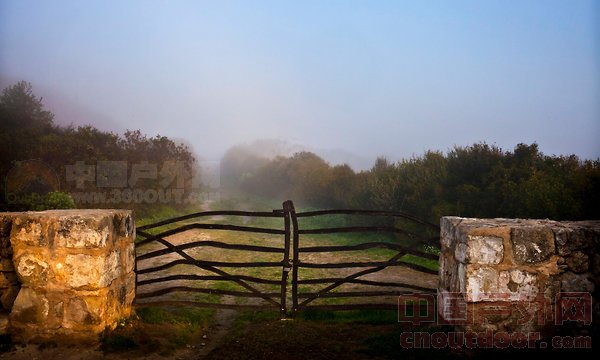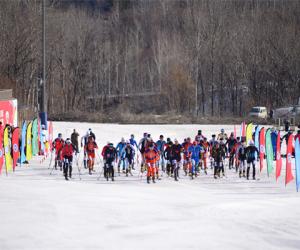Off the Coast of Spain a Tranquil Biosphere Reserve
来源: The New York Times 作者:SARAH WILDMAN
MINORCA, the first place in Spain to see the sun rise, is aglow at the end of the day. As I pulled my suitcase down the cobbled, car-free lanes of Ciutadella, the island’s ancient capital, an ocher glow bloomed across the faces of residents who sat on the terraces of back-street bars, their voices echoing within a canyon of Gothic and Baroque buildings.
The facades of rose and dusty yellow stone, and the narrow streets running past them have barely changed since 1722, the year British occupiers took the title of capital away from this town on the Mediterranean island of Minorca and handed it to the port city of Mahon. Ciutadella, to this day, remains a paean to unaltered antiquity.
The rest of the island is imbued with the same timeless quality. Though only 21 miles from the crowds and hustle of its high-profile neighbor, Majorca, the difference couldn’t be more profound. Unlike Majorca, with its sprawling hotel complexes, glitzy nightclubs and yacht-filled ports, this island 250 miles east of Barcelona offers something unusual for a Mediterranean resort: tranquillity.
The entire 270-square-mile island is a Unesco biosphere reserve, a designation issued in 1993 for the rich flora and fauna that thrive in Minorca’s forests, gorges, wetlands, salt marshes and hillsides. In 2004 Unesco expanded its protective reach, including in its definition the island’s widely scattered prehistoric sites, effectively preventing the construction of high-rise condominiums and hotels. Instead, rural hotels called agrotourismos are the hotels of choice outside the towns, and roughly 120 separate beaches — more than Majorca and Ibiza (Minorca’s other Balearic island sister) combined — remain largely unsullied by development.
But there is also a cultural dimension to Minorca’s ecosystem. The island isn’t Spanish exactly, nor simply Catalan (though Menorquin, a dialect of Catalan, is the lingua franca). This pocket of old Mediterranean culture was shaped by an array of colonizers — Romans, North Africans, Spanish and, for a brief period, the Turkish. Then the island was passed back and forth for 200 years between the Spanish, the British and the French, until finally the Spanish claimed the island for good. Architecturally, the result is a legacy that includes Art Nouveau, Gothic, Baroque and even Georgian styles. Cuisine ranges from a modified version of meat pies and gin (à la England) to the potato-and-egg tortilla of Spain, to good old mayonnaise — ostensibly a twist on a local sauce championed by the Duke of Richelieu when the French (briefly) conquered Mahon.
Last June, my partner, Ian, our daughter, Orli, then 2, and my parents arrived for a week, hoping to get a sense of Minorca’s singular identity. We flew in to Mahon, the island’s biggest town, where we rented a car and then wove our way to the opposite side of the island, stopping for lunch in Fornells, a fishing village on the northern coast where old men dried manzanilla, or chamomile, in enormous piles. A few tourists strolled the old port, stopping to eat the island’s hearty lobster stew so delicious the king of Spain is rumored to sail here just for that. On that first day we quickly discovered the island’s rather basic, but effective, protection against rampant tourism: though the main highway from Mahon to Ciutadella is well paved and commodious, many of the smaller roads that swerve into the countryside are barely wide enough for one car. We persevered, and drove on, past fishing villages that dot the island’s coves like pearls — towns that are a riot of color, with magenta bougainvillea crawling up white limestone, blue-shuttered homes that overlook the sea. Between the villages, road signs tempt with directions toward hidden beaches.
Unlike Palma de Majorca, which, by early summer, is already packed with vacationers from Germany and Britain, Minorca was still waking from its off-season slumber. At times, we couldn’t help but feel a bit like interlopers. While people we met — hoteliers, restaurateurs, shopkeepers, shoemakers, dairy farmers — were certainly friendly, there was a protective feel to Minorca, a reticence, which, for us, ultimately resulted in a deeply authentic travel experience. It was clear that this was not a place that was preening itself for tourists.
The biosphere designation enhanced the feeling of protectiveness. Everywhere there were signs indicating natural parks, with careful instructions on where one could park, camp, even walk. Property demarcations between farms were not fences but layers of rocks that formed low stone walls, which have been in place since antiquity. And in the ancient city centers, there was a sense that modernity had been purposefully kept at bay.
In Ciutadella we parked at the Plaça del Born, a square marked by 19th-century buildings carved from that magnificent rose-colored sandstone. Cars are not allowed in the historic city center without a special pass, so we walked the four long blocks to our hotel, peering into the bishop’s garden and glancing up at the 13th-century Gothic cathedral.
It wasn’t long before we found Hotel Tres Sants, an eight-room, year-old hotel in an 18th-century town house, tucked at the intersection of three streets named, like many in this city, for saints. Sant Sebastià, San Cristòfol, San Joseps — each street was protected by a small statue of its namesake, housed in a glass box above our heads.
Our hotel room was sponge-washed in faint reds and blues, and the bed was dreamily swathed in mosquito netting. José Carretero, the proprietor, has lately opened a second hotel, the five-room Marquès d’Albranca, a few blocks away. Both are family-run. His niece showed us around our hotel; his nephew worked the desk; his sister managed the housekeeping and breakfast. True Menorquines, the family dates back to at least the 15th century.
In the morning, Orli ran gleefully through the cobbled streets. She dashed into the Pastisseria des Centre, which has sold the flaky Balearic powdered sugar pastries called ensaimadas since 1881, and, later, was keen to taste homemade almond ice cream at Sa Gelateria de Menorca. At one of the ubiquitous sandal shops, with stacks of shoes piled to the ceiling, she tried on a pair of abarcas, the simple leather shoes Minorca is known for and which are sold in a rainbow of colors.
One evening we came upon a costumed crowd: women with castanets wore 19th-century dresses with white, billowing shirts and long, wide skirts; the men wore knickers. There was a full band of guitars and a female singer who barked in Menorqui like a square dance caller as the group performed. The crowd was entirely local; we were the only tourists observing. The scene was a window, we realized, onto what life has been like here for generations.
Walking home we stumbled upon Ulisses, a whitewashed watering hole facing the Mercat des Peix, a 19th-century fish market. Lighted almost entirely by candles, the bar is known for its dozens of gins. A vestige of the English domination, gin on ice, we were told, is the island’s drink of choice. Xoriguer, the best-known indigenous brand, tastes of juniper berries.
José told us that most of his clients stay up to a month with him, but we were due elsewhere. So, reluctantly, after only two nights, we bade him farewell.
Within moments of leaving the city limits, we were surrounded by unpopulated, wild land. The Minorcan soil seems to revel in its ability to make things grow, from a bounty of aromatics — rosemary bushes, thyme, lavender and chamomile — to yucca trees, blackberry bushes and succulents that shoot up through the rock crevices. Everywhere we saw trees heavy with fruit, and a robust species of wild olive trees locals call ullastres. As Ian drove, I read that the island is home to about 220 species of birds, 14 varieties of orchid and 1,000 species of plants, some 60 of which are endemic to the island.
Along the way, signs pointed out paths to mysterious prehistoric burial and prayer sites called talayots and navatas, from the Bronze Age and earlier, built of stones arranged into T-shaped monuments or igloo-like structures. There are, I was told, more of these ancient ruins on Minorca than anywhere else in the world.
Our destination was the village of Es Migjorn Gran for a one-night stay in the upscale agrotourismo Binigius Vell. The road that led there seemed unintended for cars of any size, let alone our large vehicle, but the payoff of that treacherous drive was worth it: an infinity pool, a lovely restaurant, horses on the grounds and an hourlong hike to the distant sea.
In Es Migjorn Gran we met my friend Baruc Corazón, a fashion designer from Madrid, who has been coming to Minorca since childhood. His aunt moved to the small town of Sant Lluis in the 1970s in a fit of hippie anti-establishment glee and never left. Her friends were a collection of expats: Spaniards, Germans and Americans.
Baruc told us we must visit a site that we later called the “lighthouse at the end of the world.” The landscape, he promised, was unlike anything else on the island. The next morning we did as told, driving back up toward Fornells, steering our car into the preserve marked “Parc Natural de S’Albufera des Grau” and navigating a narrow paved road. We passed a dozen groups with backpacks, sturdy shoes and walking sticks. Within a few miles, fields filled with cows, and scrubby trees gave way to a lunar landscape of black and gray slate on one side, wetlands on the other. We parked and walked out to the edge of Cap de Favaritx, where we found a black-and-white-striped lighthouse out of central casting, surrounded by smooth-rock beaches.
On the way back, we picked up Baruc, who directed us down a side road toward the sea. “There are two restaurants in this village,” he said from the back seat of our Citroën. “One has a fantastic view. The other has the most amazing food. Let’s go there.”
Soon we emerged over a hill and took in a collective breath. Before us lay the tiny village of Sa Mesquida (“the Mosque,” a nod to the town’s long-ago North African residents), a handful of whitewashed houses along a one-lane road that led to a wide beach with fine white sand and a path stretching off to more coves.
“The British and the French used to hide in this bay, before they attacked Mahon,” the proprietor of Bar Sa Mesquida said to us, as we ordered a bottle of crisp, white Galician wine, a whole dorade, grilled and dressed with lemon and salt, and a tray of fried ortigas de mar, a sort of anemone with a taste like a burst of the sea itself and eaten only in early summer.
After lunch, we took a short hike. On the beach in Sa Mesquida, paths led from beach to sandy beach. There were no snack shacks, no beach chairs, no hawkers. After we wove our way through the marshy path, and then back to our car, Baruc directed us toward the town of Sant Lluis, where his aunt was celebrating her 60th birthday.
SANT LLUIS, founded by the French, is a tidy village with a neatly laid out grid of streets and a photo-worthy windmill. But the roads surrounding the town were minuscule and haphazard. We were stuck in one lane, trying to turn around, when a horse-drawn carriage came upon us, its driver demanding we back up as he cursed us in the local dialect. Somehow, after 15 sweating minutes, we were able to escape.
That night, in honor of Baruc’s aunt, we ate and danced with a motley group of expats. An American couple, Dick and Patrick, who have owned an old farmhouse on the island since 1971, were a font of Minorcan historical knowledge. “Do you know the history of Admiral Nelson here in Minorca? Did you know Americans trained here before Annapolis?” Dick asked. “And that there is a cemetery in Mahon filled with Americans?” I did not know these things, I told him. He parried with another question: “Did you know that St. Augustine, Fla., was settled by Minorquines?”
That one I looked up. The Minorcan group consisted of 1,400 indentured servants brought over in 1768. Those who survived the journey and a decade of hardship became a vibrant community in St. Augustine that still celebrates its Minorcan roots.
As we learned the history of the island, we also discovered something useful for the rest of our stay: an inexpensive underground network of sublegal rooms for let. We took a gamble and allowed ourselves to be led to one house that had five gorgeously appointed rooms, a pagoda with lounge chairs, an endless breakfast, drinks all day, American bluegrass on the iPod.
We spent the next morning happily swimming at a municipal beach peopled by a few tourists and locals. We were content, but Baruc insisted that we move away from the easy-to-reach shoreline. Soon we were hiking across parkland, heading for a set of coves in an area called Binisafua. This time the landscape was flat scrub brush that reminded me of Israel.
With a 2-year-old in tow, I was daunted by the jagged cliffs it seemed we had to traverse to get to the water. Fortunately, many, many years ago, someone had cut rough steps into the stone, and as we picked our way down the rocks, there, spread out before us, was the largest cove we’d yet come across. The “beach” here wasn’t sand at all, just smooth rock platforms dotted with tanning locals, most of them nude. Like some of the other best spots on this island, this corner — which faced a warm, calm sea that was the most intense blue I have ever seen — was unmarked.
Some locals picnicking there told us we must go to Mahon, the capital, to make our island tour complete. So the next morning we set out, wandering the streets, and admiring the Art Nouveau architecture around the cathedral and the magnificent views of the port.
The enormous port has drawn visitors and traders for centuries. As a result, Mahon feels more open to the world than Ciutadella. It is still nothing like the bustle of Palma on Majorca or the crowds in other Spanish seafront cities. For one thing, as Sandy Larsen, an American expatriate who helps arrange tours of the island explained to us, yachts are not encouraged. It is far more expensive to dock a yacht in Minorca than in other Mediterranean ports, she said, so the yachters don’t come. It is another way the island keeps its cities for its citizens.
On our last day, we ventured out into the countryside once again. We steered north, past Mahon, to the park that abuts Es Grau, a tiny fishing village. When we parked we saw off to one side a marked path that meandered through the protected salt marshes. In front of us was a wide, shallow-water cove, filled with that exquisite aquamarine water, perfect for wading. A few beachfront shacks offered fried sardines and beers. An eco-tour kayaking outfit offered friendly, and environmentally safe, tours of nearby coves and deserted islands. We opted for neither swimming nor boats, just a plate of fried sardines by the sea.
Then we stared out at the landscape, windswept and purposefully, gloriously wild.
PLANNING YOUR TRIP
Where to Stay
The eight room Hotel Tres Sants in Ciutadella (Calle Sant Cristòfol, 2, Ciutadella; 34-971-48-22-08; hoteltressants.com), above, is a dream world of sponge-colored walls and billowing curtains. A full, delicious breakfast is included in the high-season rate of 150 euros (about $196 at $1.30 to the euro). The owners have a few apartments for rent as well.
There are several dozen agrotourismos on Minorca; some encourage children, others eschew them. We stayed at the (child friendly) Binigaus Vell (Cami Malagarba, kilometer 0.9, Es Migjorn Gran; 34-971-054-050; binigausvell.com) outside of the town Es Migjorn Gran, which has horses on site, an infinity pool, an excellent kitchen and an easy hour-hike to the beach at the ready. A double room starts at 187 euros in early summer.
Just slightly south of Mahon, there are word-of-mouth rooms to rent and lots of small boat tours to take for those who don’t want to hike to far beaches. Sandy Larsen (sandy@mandrakia.com), an expatriate American, can tell you more about where to go about finding such untraditional lodging and tours.
Hotel Xuroy (Cala Alcaufar, Sant Lluis, 34-971-15-18-20; xuroymenorca.com), a 1950s-style family-owned hotel on a gorgeous little inlet, offers 46 clean and basic rooms and a baby-friendly tiny cove beach — all for about 50 euros a night, depending on the season.
Where to Eat
A visit to Minorca is not complete without a healthy portion (or several) of the flaky pastry called ensaimada. Try the ones at Patisseria des Centre, a staple in Ciutadella since 1881 (Ses Voltes 8; 34-971-38-06-40).
For picnics, Pere and Lola Mosco sell roast chicken with vegetables (6 euros), lentils with ham (4 euros) and croquetas (4 euros) from their tiny shop Es Gust (Calle de Sant Pere 7, Ciutadella; 34-971-48-17-33).
On the way to the other side of the island, Restaurant Migjorn (Avenida de la Mar 1, Es Migjorn Gran; 34-971-37-02-12; migjorn-canapilar.es) is worth a detour for the locally raised lamb and the cod, a Spanish staple, done well. An enormous lunch for two will run 80 euros.
Bar Sa Mesquida (Calle d’en Fonso, 2. Sa Mesquida; 34-971-18-83-54) is known for its grilled fish and paella, Josefa Ortuño, the proprietor, runs the tiny kitchen. Dinner for two runs about 70 euros.
If it’s just good old fried sardines and a pint of beer you’d like, try the beachfront plastic chairs of Bar Es Moll, in the village Es Grau (Moll Magatzems. 17, Es Grau, 34-971-359-167).
SIX BIOSPHERES WORTH A TRIP
There are 580 Unesco biosphere preserves in 114 countries, which means you could spend a lifetime hopping from one to the next and never quite reach them all.
Last year, the 40th anniversary of the program, 18 new regions around the globe received the designation, each chosen to promote sustainable development as well as cultural and environmental protection. Some of the sites are already highly touristed areas, and it is hoped the designation will help control, maintain and direct that visitor-based industry. That’s certainly true of the Baa Atoll, Maldives, which has only 12,000 full-time inhabitants but welcomes some 350,000 tourists annually, many of them divers and snorkelers. With the new biosphere designation, the Maldives hope to continue a tradition of sustainability focused on the islands’ extensive coral reef system.
Tourists also already visit Mujib, Jordan, in the Dead Sea basin and the Jordan Rift Valley, which includes the lowest spot on earth (1,370 feet below sea level) and dozens of indigenous plants.
Mao’er Mountain, China, another 2011 grantee, is a mountain of gorgeous vistas and home to ethnic groups like the Han Chinese. The area was chosen for both its cultural and environmental diversity and to acknowledge a growing cultural interest among travelers to this once remote area.
In Africa, Songor, Ghana, is a large swath of coastal land with both marine and freshwater ecosystems. Ghana is hoping to develop and enhance the area’s eco-tourism industry, which has only, cautiously, just begun.
In Eastern Europe, the largely agricultural region of Zuvintas, Lithuania, was chosen for its wetlands and lowlands.
On this side of the world, St. Mary’s, on St. Kitts and Nevis, with its cloud forests, mangroves and coral reefs, is one of the first biosphere reserves in the Caribbean.

相关评论:
匈牙利探险家23日启程徒步穿过南极洲大陆
11/23 16:57
2018徒步中国·全国徒步大会黔西南(安龙)站结束
11/19 17:13
2018全国徒步大会(黔西站)在贵州黔西县举行
11/12 12:07
千人走戈壁 首届丝绸之路国际徒步节开启
05/16 15:17
一名中国香港男子在尼泊尔徒步时不幸丧生
05/16 15:01
攀岩世界杯莫斯科站宋懿龄速度赛夺冠
04/19 15:04
三十而立!钟齐鑫为热爱坚持 东京奥运会渴望突破
04/08 14:03
保护密云水源地 攀岩胜地被关闭
03/26 15:34
2019中国攀岩联赛全新启动
03/26 15:30
中国创历史最佳 国际登联攀冰世界杯北京站落幕
02/25 14:45
2019青海省自行车联赛赛首站在化隆县开赛
04/08 14:26
西藏环巴松措国际山地车环湖赛将于4月底举行
04/08 14:15
铁人三项国际赛 台湾铁人一哥遭机车擦撞
03/26 15:56
西藏打造跨喜马拉雅自行车赛品牌
01/03 13:57
环福州·永泰国际公路自行车赛第二赛段德国车手称雄
11/16 15:12
珠峰登山者:珠峰景区永久关闭是假的 垃圾也没那么多
02/25 15:29
日本高龄探险家将挑战南美最高峰 5年前成功登珠峰
12/05 12:43
第五届中韩国际登山体验大会在宁波举行
11/26 11:23
西藏8年接待登山爱好者两万多人次
11/21 10:10
冰封59年3名遇难登山客终回家 81岁队友:这是种解脱
11/16 10:30





